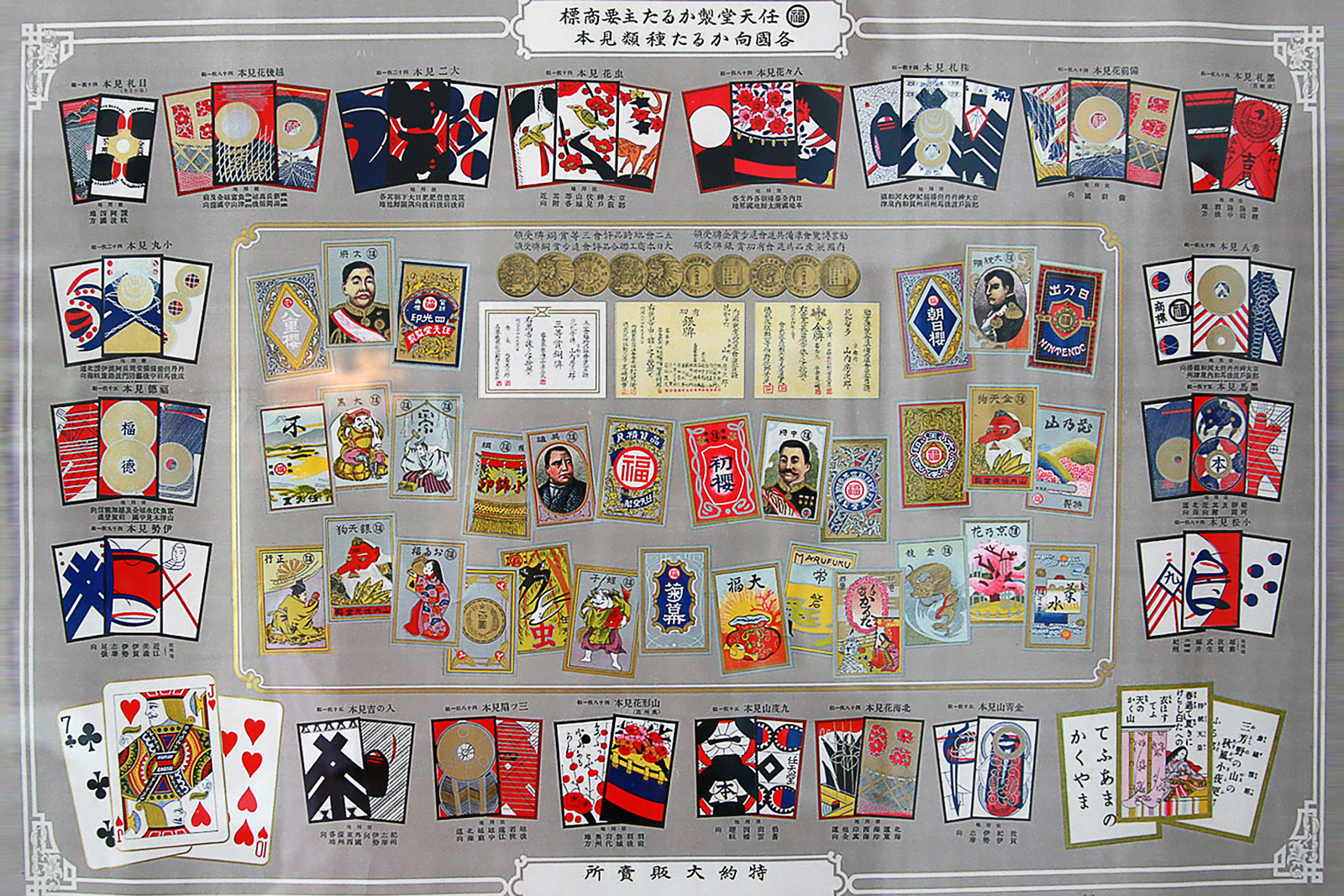Release: Pre-WWII
Manufacturer: Marufuku Co. Ltd.



Hanafuda translates as ‘flower cards’ and are a type of traditional Japanese playing card, or ‘karuta’, that are smaller than standard Western decks.
This item is a very early example of Nintendo’s hanafuda from the Meiji period (1868-1912).
Nintendo was first established in the year 1889, when Fusajiro Yamauchi opened a small store in Kyoto, manufacturing and selling playing cards. This was during the time of the collapse of the Shogun and Samurai systems in the old capital Kyoto, shortly before the emperor moved to Edo, which later was to become known as Tokyo.
The first store used the name “Marufuku” from the time of its establishment in Kagiyacho, Shimogyo Ward, in Kyoto. This name can also been seen in this very early photograph.
The Marufuku mark on the packaging and tags was originally the name of the Fukui family. Fusajiro Yamauchi was born in 1868 as the eldest son of Sosuke Fukui, before being adopted by Naoshichi Yamauchi in 1872 and inheriting the Yamauchi family name in 1881. After that, it became a registered trademark of Nintendo. Source.
The design of the logo combines the kanji 福 “fuku” (translates as good fortune/happiness) in a circle – “Maru” (丸 in kanji), or literally Marufuku (丸福).
Another clue that indicates cards originate from the pre-WWII period is by studying how the name ‘Nintendo’ is displayed in Kanji. Traditionally, Japanese was written in vertical columns before the Japanese script reform of the early 20th century. These columns were read from top to bottom and from right to left. This way of writing is called tategaki (縦書き) – which literally means ‘vertical writing’.
Therefore, the traditional Kanji for Nin-Ten-Do was written right to left, as shown on the packaging of these cards 堂天任, whereas the modern way to write the characters is 任天堂 .



